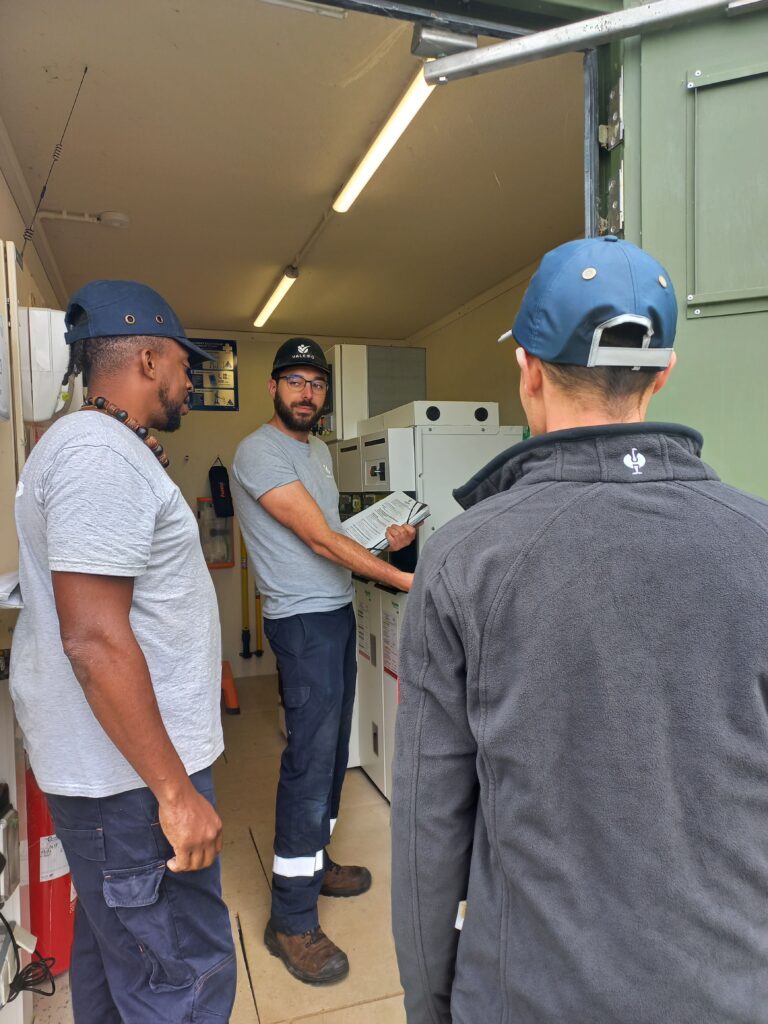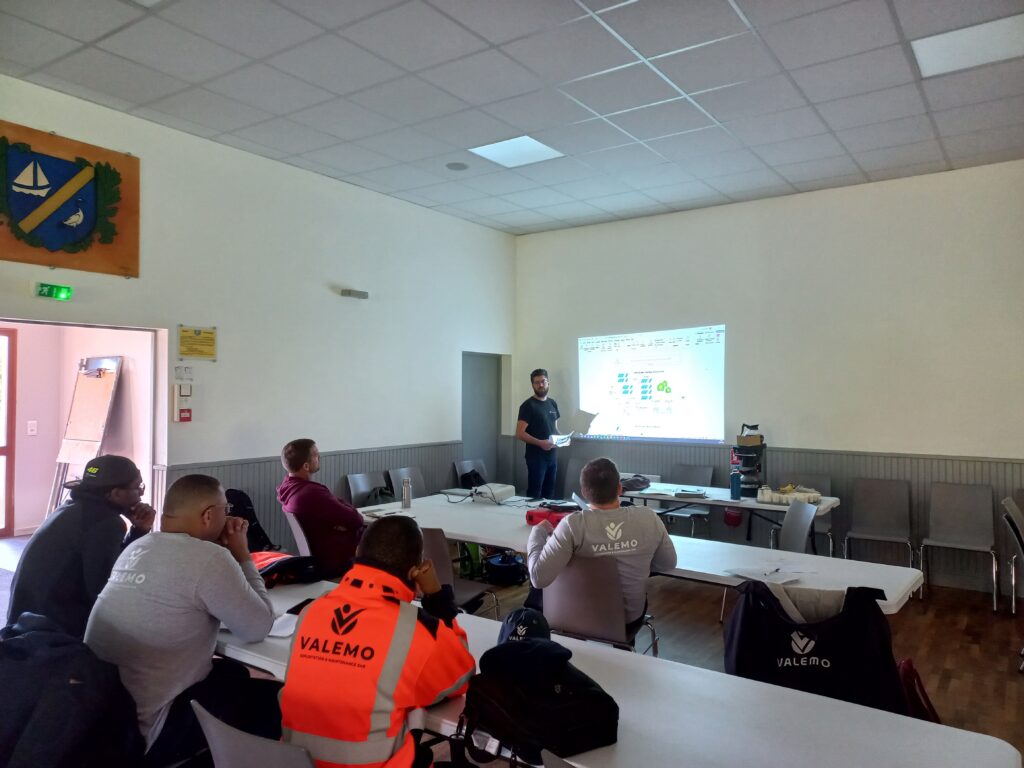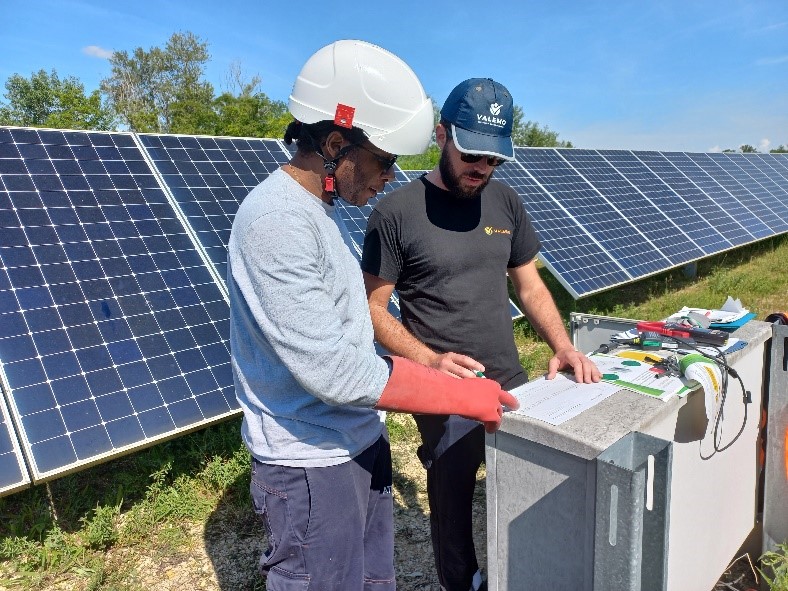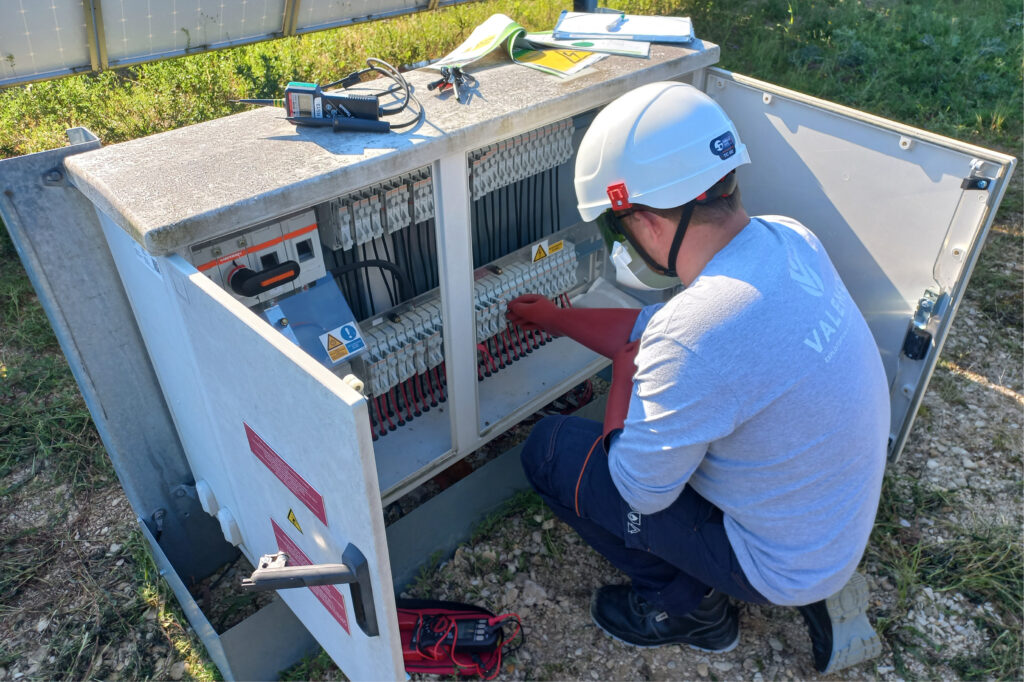High Voltage consignment exercise, a voluntary approach supported by VALEMO to practice in real conditions
For several years now, VALEMO has been organising real-life manoeuvring exercises on high-voltage cubicles before training maintenance teams in high-voltage consignment.
These exercises, carried out in the field at the high-voltage substations maintained by the team, complement the preparation for authorisation carried out in the classroom at the training centres.
VALEMO’s aim is to give its employees the opportunity to work on installations in service in a real-life situation and to apply the procedures put in place at VALEMO.
This field exercise is now organised and led by a member of the Maintenance team, who is also the Methods referent for electrical and photovoltaic activities.
In order to take advantage of the fact that all employees were attending the Safety Days, the exercise was carried out the day before these days, with a theoretical refresher session in the morning, during which VALEMO’s risks, procedures and reference documents were reviewed. The afternoon was devoted to a real-life situation on a high-voltage substation: several consignment scenarios were proposed to the employees, who took it in turns to implement the procedure and carry out the manoeuvres, with step-by-step validation by the colleague supervising the practice.

The aim is to check that safety rules have been properly understood and applied (preparing the work, coordinating with the Electrical Operations Manager, wearing PPE, ensuring safety during the work, etc.) and to exchange views with colleagues on specific situations or cases encountered in the field.
This also enables feedback to be shared internally, and the knowledge of the Methods Advisor to be shared.
At the end of the exercise, the referent issues an opinion enabling the VALEMO Director to validate the high-voltage (HV) consignment authorisation. This is a voluntary process supported by the company, both in terms of investment on the part of the referent and the training department. This approach is essential for VALEMO as part of the control of electrical risk in our activities.
Preparing for “PV field of application” electrical autorisation
Work on solar power plants is becoming an increasingly important part of VALEMO’s business. Today, ten of VALEMO’s eleven maintenance bases work daily on repairs and preventive maintenance on solar fields, on the ground or on roofs. The configurations of these sites are very diverse, both in terms of the type of equipment and the architecture of the sites.
As a result, maintenance team members are required to troubleshoot, set up and change components (panels, inverters, connectors, etc.), as well as intervening in emergency situations.
One of the specific features of PV installations is the permanent presence of voltage, whenever the solar array is exposed to the sun. This means that you need to be particularly careful when handling the equipment.
The Low Voltage (LV) electrical qualification for the “PV field of application” enables fellow electricians, previously qualified in the LV voltage range, to work on solar panels. This involves learning about the risks and safety measures listed in standard NFC 18-510 A2.
The training provided by VALEMO’s Methods consultant comprises two parts, as required by the standard:
- A reminder of the elements of safety, design of PV sites, risks present and safety systems. In addition to the general information contained in the standard, this in-house training enables us to specify our internal rules and procedures. For example, the use of certain types of connector, for which the training provides an opportunity to create a connector in the classroom using the appropriate tools.

- On-site practical training, during which employees take it in turns to carry out the necessary operations on cases commonly encountered on site. These cases include disconnection to replace a panel, replacement of an inverter, etc. In each case, the colleagues go through the safety steps step by step, under the approval of the Methods referent in charge of the training.

At the end of the training, the Methods referent issues an opinion that validates the accreditation.
The first two in-house VALEMO sessions received very positive feedback from colleagues, who appreciate the opportunity to discuss situations encountered on site and benefit from feedback from the trainer who, as the Methods referent for the PV activity, consolidates knowledge and formalises it for the entire Maintenance team.
Practical experience in the field is also highly valued, enabling participants to work in real-life situations and deal with the most common cases encountered on a daily basis.
